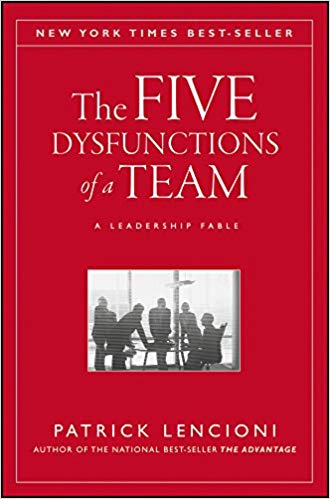

This article is an excerpt from the Shortform summary of "The Five Dysfunctions of a Team" by Patrick Lencioni. Shortform has the world's best summaries of books you should be reading.
Like this article? Sign up for a free trial here .
Are you looking for The Five Dysfunctions of a Team quotes by Patrick Lencioni? What are some of the most noteworthy passages worth revisiting?
The Five Dysfunctions of a Team by Patrick Lencioni explores the five most common obstacles (“dysfunctions”) to successful teamwork. Lencioni presents the five dysfunctions like a pyramid—each one builds on the next. And to solve all the dysfunctions, you need to start at the bottom and most fundamental dysfunction.
Below is a selection of quotes with explanations.
The Five Dysfunctions of a Team: Quotes and Passages
What prevents a team from succeeding in its mission? This is the central question of The Five Dysfunctions of a Team. The book presents the five dysfunctions like a pyramid—each one builds on the next. And to solve all the dysfunctions, you need to start at the bottom and most fundamental dysfunction.
The following The Five Dysfunctions of a Team quotes by Patrick Lencioni highlight some of his key ideas.
“Remember teamwork begins by building trust. And the only way to do that is to overcome our need for invulnerability.”
Trust is the confidence that your peers have good intentions and aren’t out to harm you. Teams that trust one another are comfortable being vulnerable, and can admit mistakes and weaknesses.
If you have an absence of trust, then you don’t feel safe being vulnerable and admitting your weaknesses, because you fear your vulnerability will be used against you.As a result, teams that lack trust hesitate to ask for help, spend a lot of time managing behaviors and appearances, and hide their mistakes from one another. People who are afraid of being vulnerable receive feedback poorly, and they retaliate. As a result, productive feedback is stifled.
“The enemy of accountability is ambiguity.”
High-performing teams hold each other accountable to high performance standards. They are able to do this because everyone is clear on what is expected of themselves and their teammates (they have already engaged in healthy conflict to develop a plan that everyone is committed to). Moreover, they’re comfortable being vulnerable and sharing feedback, so they can raise questions of performance in other people without fear of retaliation.
To overcome this dysfunction, teams should engage in peer pressure tactics, which is scalable and reduces the bureaucracy needed for oversight. This means publishing team goals and standards and instituting regular process reviews. They can also receive team rewards, which motivates teams to work together and point out individuals who aren’t pulling their weight.
“Members of teams that tend to avoid conflict must occasionally assume the role of a “miner of conflict”—someone who extracts buried disagreements within the team and sheds the light of day on them. They must have the courage and confidence to call out sensitive issues and force team members to work through them. This requires a degree of objectivity during meetings and a commitment to staying with the conflict until it is resolved. Some”
Functional teams engage in ideological conflict. When there is a fear of conflict, disagreements get swept under the rug and the team is unable to resolve critical issues. Teams that fear conflict don’t tap into the full expertise and experience of their members and end up channeling their unspoken conflicts into personal attacks.
To overcome this dysfunction, teams should actively seek out sources of conflict instead of avoiding them. Leaders should give real-time permission for individuals to debate with one another, and hold back their urge to protect the team from conflict and disagreement.
———End of Preview———

Like what you just read? Read the rest of the world's best summary of Patrick Lencioni's "Five Dysfunctions of a Team" at Shortform . Learn the book's critical concepts in 20 minutes or less .
Here's what you'll find in our full Five Dysfunctions summary :
- What the Five Dysfunctions are
- Why absence of trust is the fundamental dysfunction
- How to get people to argue the right way
- Strategies and exercises to overcome each dysfunction






